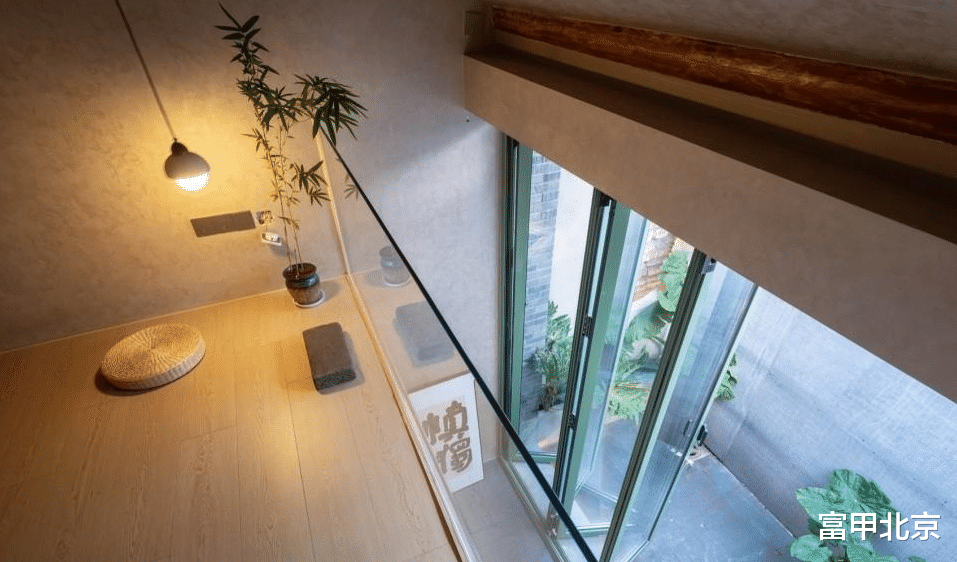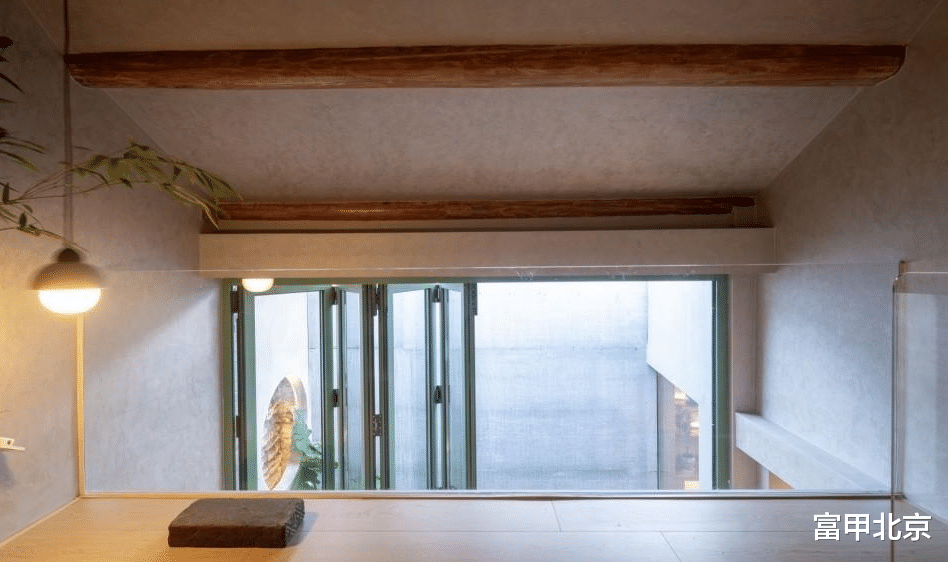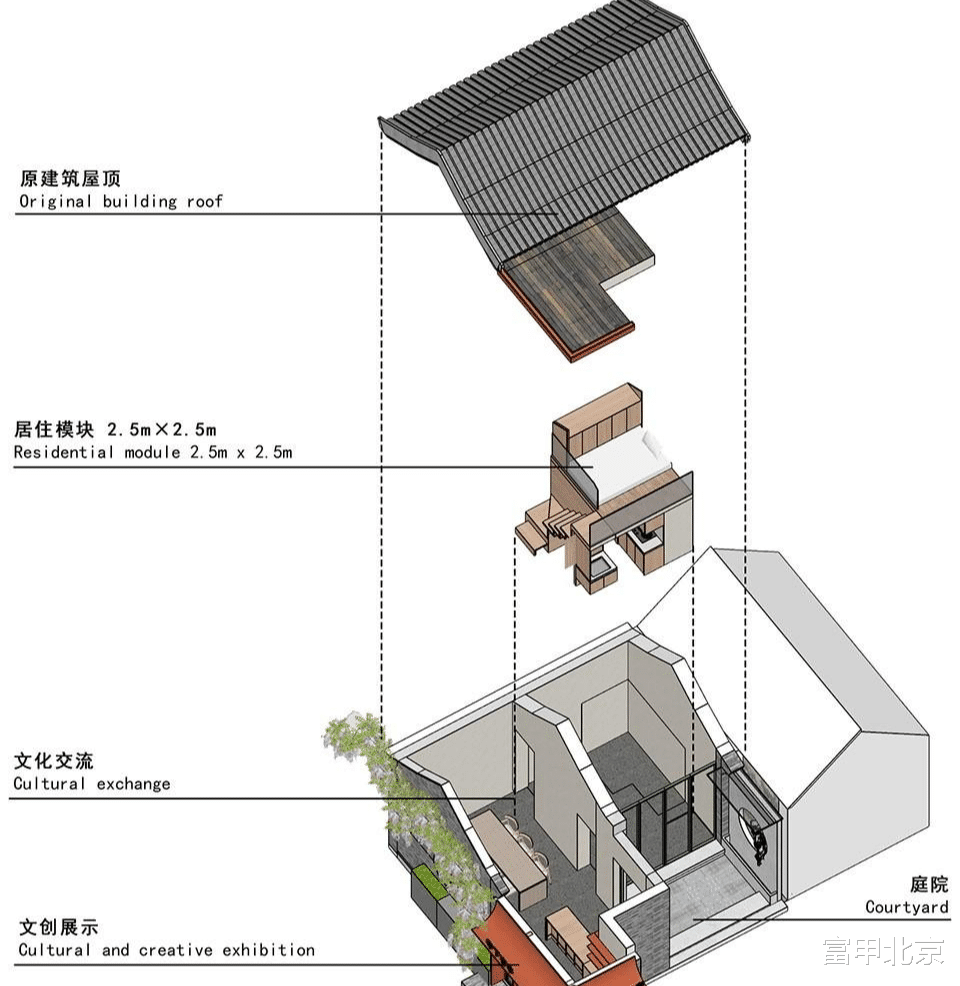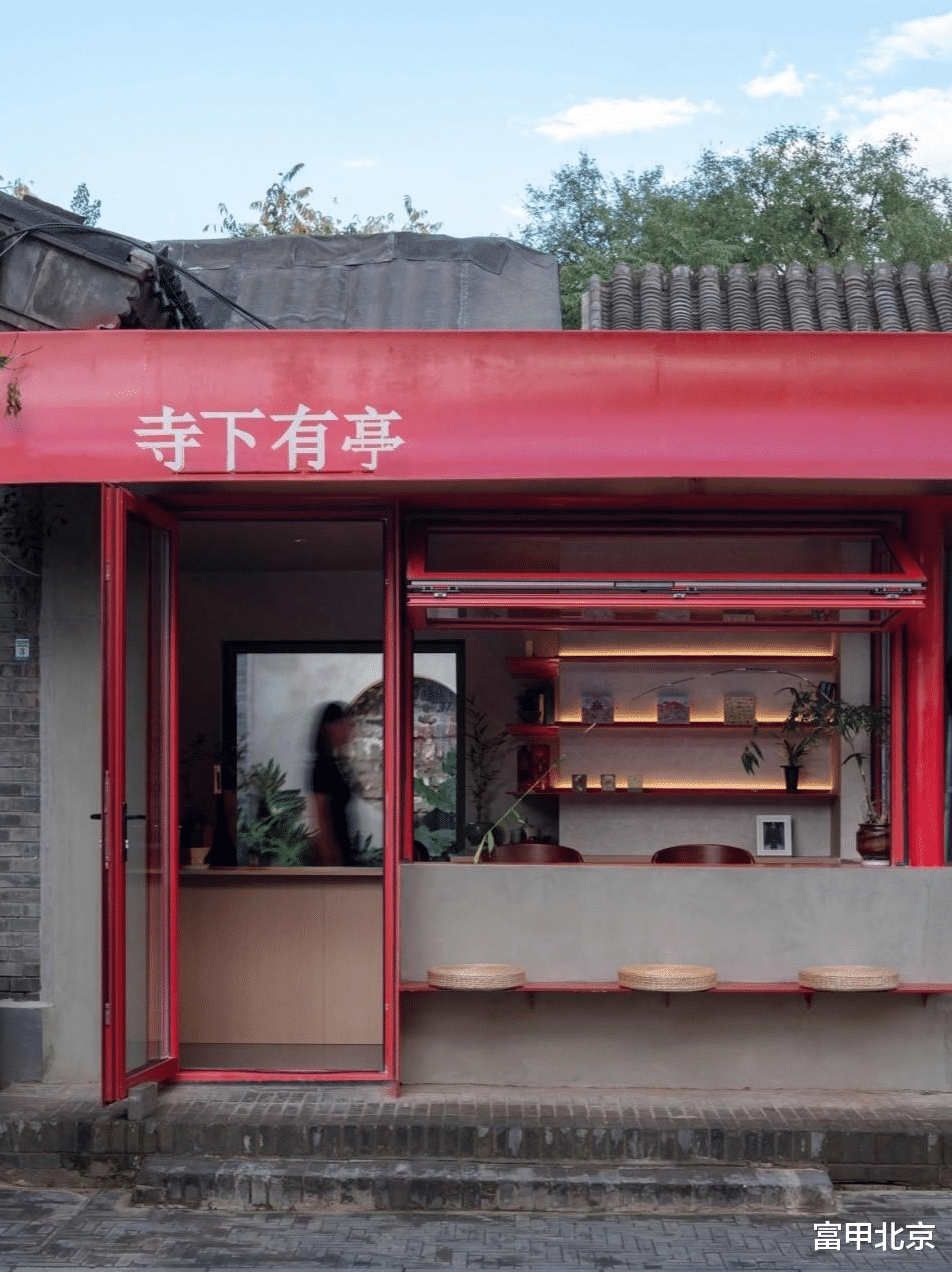This project, as the first initiative of the second phase of the district redevelopment by Beijing Xuanfang Dade Company in the eastern area of Fayuan Temple, aims to jointly create and explore an offline model space that combines residential and commercial functions, serving as a prototype for further promotion in the area.
▼院子在夜色中焕然新生,Siheyuan during the night© 向量建筑

项目占地40多平米,建筑面积仅有25平米,原有的建筑由两间北房和西侧外接的平顶房组成。
The project covers an area of over 40 square meters, with a building area of only 25 square meters. The original structure consists of two northern rooms and a flat-roofed extension on the west side.
▼改造前场地照片与改造前平面图 Pre renovation site photos and pre renovation floor plan© 向量建筑

项目设计上考虑后期北京平房老破小的可借鉴复制模式,我们最大化优化空间功能,用北房一跨间(3m×3m)解决厨房、卫生间、储藏、卧室功能。植入一个2.5m×2.5m的模块装置(后期可以升级成装配产品),满足一居室的功能使用需求。以此释放出剩余空间当作多功能空间,满足不同的客户自定义使用需求。
In terms of project design, we considered creating a replicable model that can be applied to old, small, and deteriorated courtyard houses (siheyuan) in Beijing. We optimized the space to the maximum extent by using one span of the northern room (3m x 3m) to accommodate the functions of a kitchen, bathroom, storage, and bedroom. A 2.5m x 2.5m modular unit (which can be upgraded to an assembly product in the future) was inserted to meet the functional needs of a one-bedroom space. This design frees up the remaining space to serve as a multifunctional area, allowing for customization according to different clients’ needs.
▼2.5m×2.5m小平房居住模块单元,2.5m x 2.5m small bungalow residential module unit© 向量建筑

▼夹层空间,Mezzanine space© 向量建筑



室外的庭院借助邻居旧墙,红色屋檐,绿化种植草槽打造精神小天地。
The outdoor courtyard utilizes the neighboring old walls, red eaves, and green planting troughs to create a serene and spiritual space.
▼庭院的新生,The rebirth of the courtyard© 向量建筑

▼庭院老墙与植物,Old walls and plants in the courtyard© 向量建筑

本案就形成了“前商后居”模式,也能兼顾街区的立面形象和丰富片区业态。
This project adopts a “front commercial, rear residential” model, balancing the facade aesthetics of the street while enriching the business offerings in the area.
▼改造后建筑平面图 Plan of the renovated building© 向量建筑

▼方案轴测图 Scheme axonometric diagram© 向量建筑

建筑位于法源寺东侧40m,因为地理位置的独特性,形态上设想让文化作为一种“流动”蔓延到街区和周边,外观的设计上解构中国传统亭子元素,设计了角亭这一形象,配色采用传统二朱红色,既能和风貌融合也可以彰显自身的特征。
The building is located 40 meters east of Fayuan Temple. Due to its unique geographical location, the design concept envisions culture as a “flow” that spreads through the neighborhood and surrounding areas. The exterior design deconstructs elements of the traditional Chinese pavilion, creating the image of a corner pavilion. The color scheme features traditional vermilion red, blending harmoniously with the historical surroundings while also highlighting the building’s distinct characteristics.
▼寺下有亭夜景,Night view of the Pavilion under the temple© 向量建筑

▼寺下有亭外貌,Appearance of the Pavilion under the temple© 向量建筑

▼折叠窗口与室外休憩空间,Folding windows and outdoor recreational spaces© 向量建筑


在这样一个把角空间,给人创造一种有文化记忆锚点的情境体验,开放的折叠窗开放空间也成为了一个很好的交流互动的窗口。
In this corner space, the design aims to create a contextual experience that serves as a cultural memory anchor for visitors. The open folding windows enhance the sense of openness, turning the space into an inviting window for interaction and communication.
▼亭下视野与街巷关系,View under the Pavilion and Streets and Alleys© 向量建筑

▼室内西南侧看向北侧,Looking from the southwest to the north© 向量建筑

▼从窗口看向法源寺前街,Looking out of the window at the front street of Fa yuan si© 向量建筑

亭子在中国原意中是供大家停歇、交流、放松、舒展心情的地方。店名“寺下有亭”,除了样板间的展示定位,我们亦是一个针对街区、居民的一个文化共享的空间。美学和传统文化相关的活动,亦可以在这里呈现。未来通过每周主理人,每日店长的模式,邀约不同的品牌人和文化团体来免费使用空间,策划活动,最后可以在美学、文化与艺术上跟街区形成良性互动,达到文化的传播和空间的活化,也让街区和当地居民得到更好的回馈。
In China, the original meaning of a pavilion is a place for people to rest, communicate, relax, and relax one’s mood. The store’s name, “Pavilion under the Temple,” reflects not only its role as a model showroom but also its purpose as a cultural sharing space for the community and residents. Activities related to aesthetics and traditional culture can also take place here. In the future, through a weekly curator and daily manager model, we will invite different brands and cultural groups to use the space for free, hosting events. This will foster meaningful interaction between aesthetics, culture, and art with the neighborhood, promoting cultural dissemination and activating the space. It will also provide valuable feedback to the community and local residents.
▼文化交流空间与视野渗透,Cultural Exchange Space and Perspective Penetration© 向量建筑

▼吧台,bar© 向量建筑

▼室内与可开合的庭院,Indoor and openable courtyard© 向量建筑

无论是从形态还是未来经营的角度,初衷是努力回归到探讨城市的更新模式,希望这里可以成为一个创造情景并对片区贡献做出回应的一个点。
From both the design form and future operational perspective, the original intent is to explore urban renewal models. The aim is for this space to become a focal point that creates meaningful experiences and responds to the needs of the surrounding area, contributing to the community’s development and renewal.
▼空间细节,Spatial details© 向量建筑


